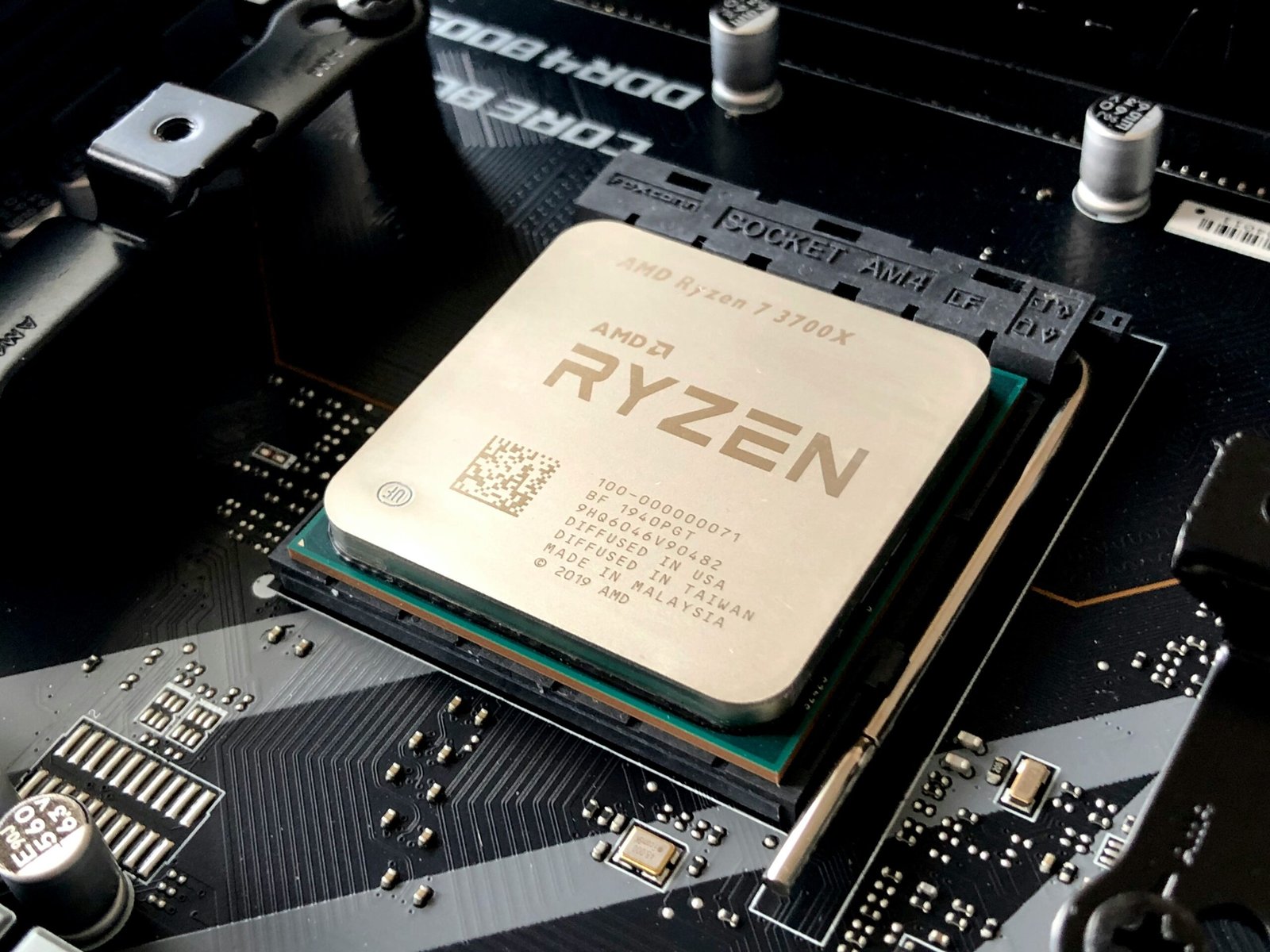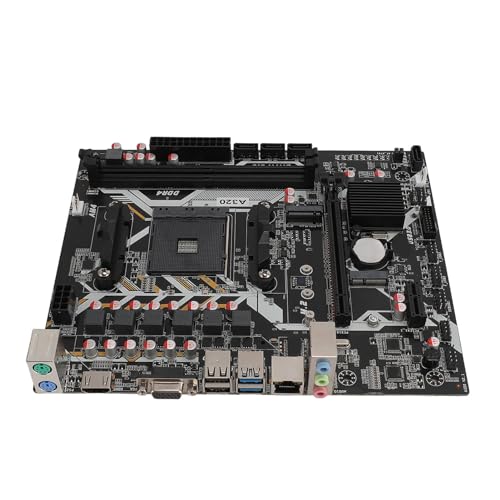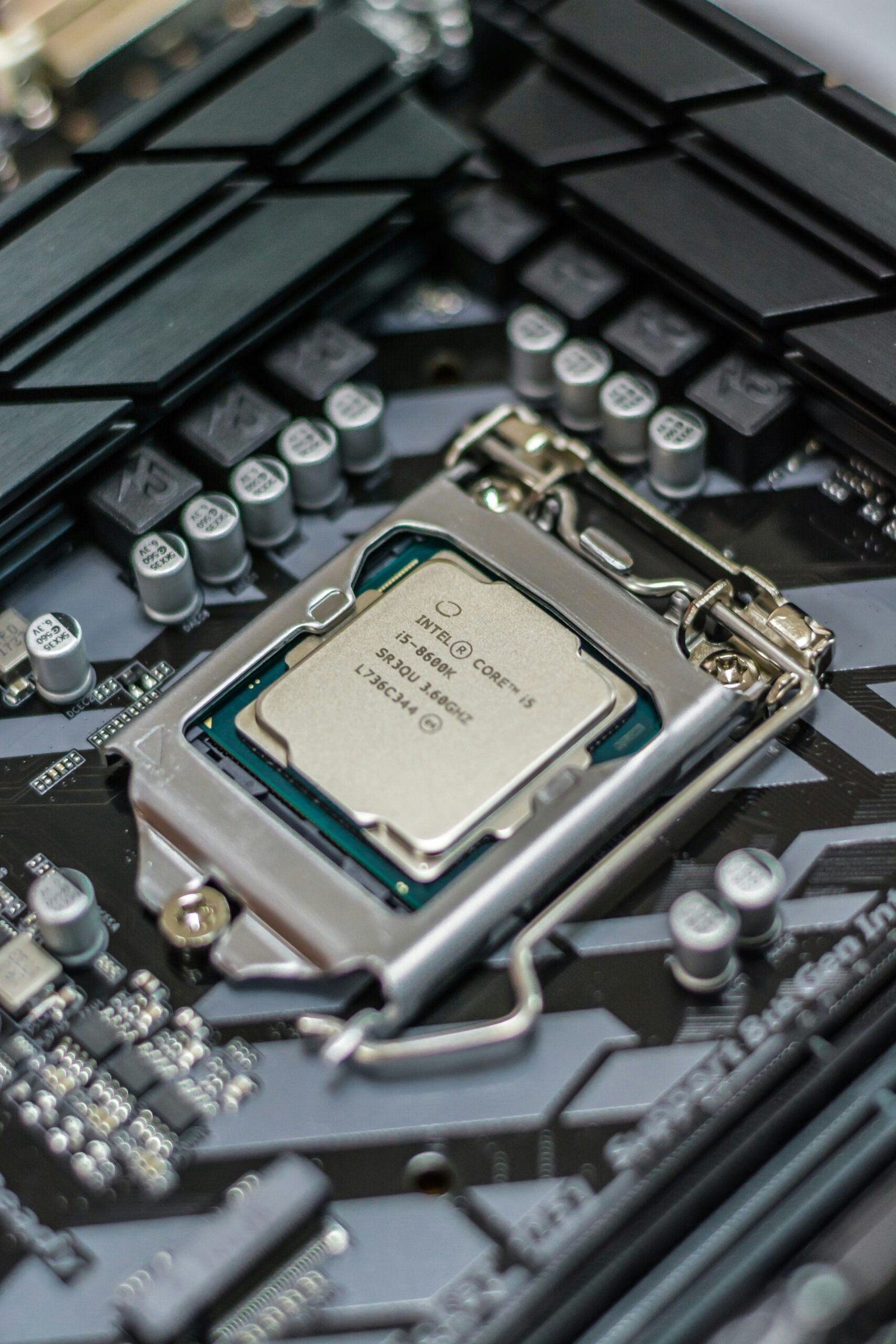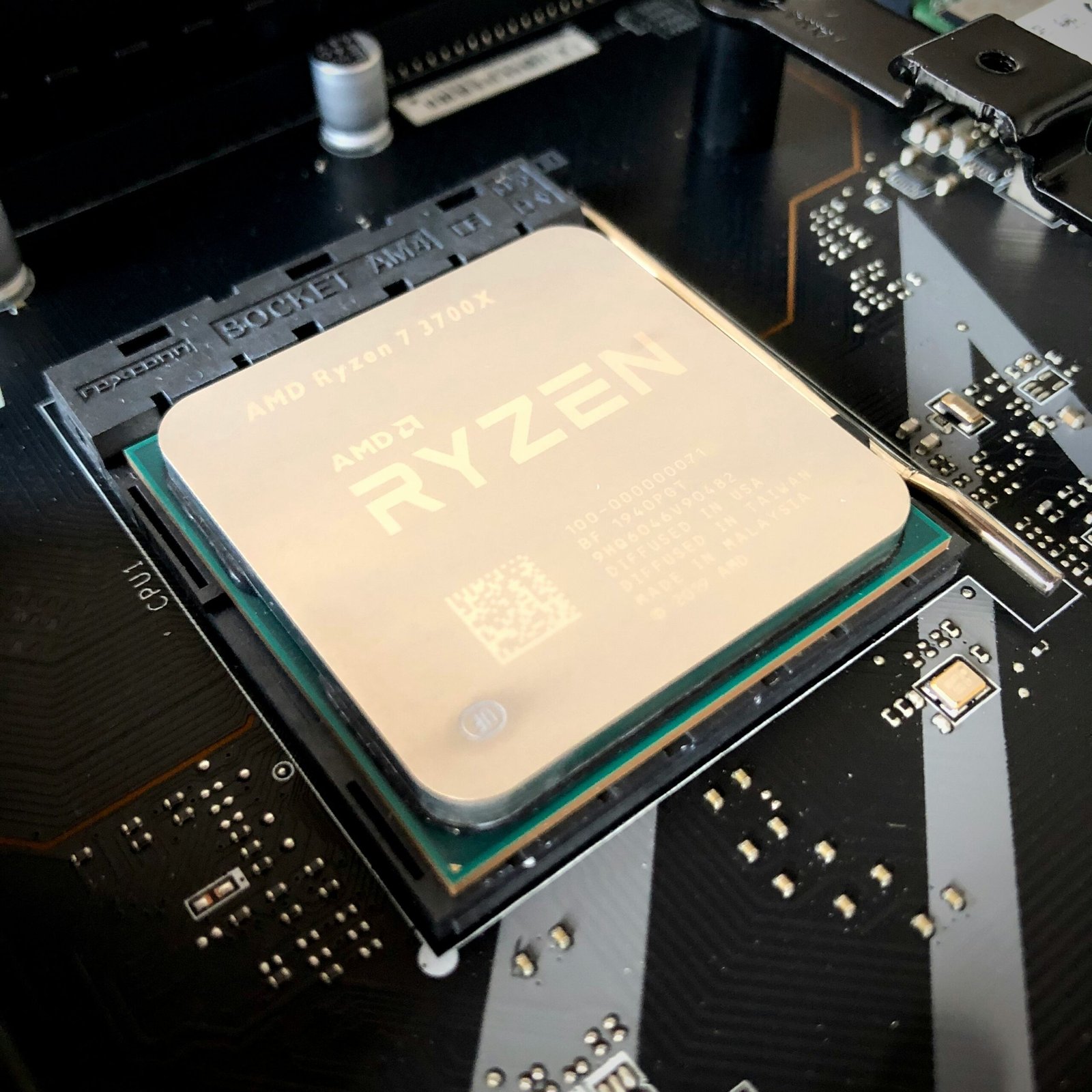Introduction to AM4 Motherboards
AM4 motherboards serve as a critical component within the realm of custom PC building, offering a versatile platform that supports a wide range of AMD processors. Launched in 2016, the AM4 socket was designed with the intent of supporting both current and future generations of AMD Ryzen CPUs, making it an attractive choice for gamers, content creators, and technology enthusiasts alike. This socket enables users to take advantage of the performance breakthroughs brought by AMD’s Ryzen line, which has garnered attention for its multi-threading capabilities and impressive power efficiency.
The significance of AM4 motherboards cannot be overstated as they play a pivotal role in the overall functionality and upgrade potential of a system. By selecting an AM4 motherboard, users can ensure compatibility with a variety of Ryzen processors, from entry-level models to high-end options designed for overclocking and heavy workloads. This compatibility opens up numerous possibilities for building a customized system tailored to specific performance needs and budget constraints.
Furthermore, AM4 motherboards are equipped with several features that enhance their appeal. Many models come with comprehensive support for DDR4 memory, providing faster data transfer rates compared to previous generations. They often include multiple PCIe slots for graphics cards and expansion cards, making them suitable for diverse applications from gaming to professional rendering. Enhanced connectivity options, including USB 3.1 and M.2 slots for NVMe SSDs, are also commonly found across AM4 motherboards, further augmenting their utility.
In focusing on budget-friendly builds, selecting an AM4 motherboard is particularly advantageous. These motherboards frequently come in a variety of price ranges, allowing users to find a suitable option that fits their financial plan without sacrificing performance. Such flexibility makes AM4 motherboards an intelligent choice, whether for casual users or serious gamers seeking high-performance components
Understanding Your Needs and Budget
When embarking on the journey to choose the best AM4 motherboard for your budget build, the first step is to clearly assess your specific needs. The intended usage of your computer significantly impacts the features you should prioritize. For instance, if your primary goal is gaming, then considerations such as support for high-speed RAM, overclocking capabilities, and adequate PCIe slots for graphics cards are essential. On the other hand, content creation tasks may necessitate additional USB ports for external devices and compatibility with high storage capacities. General tasks may allow for a more modest approach, focusing on reliability and essential functionalities.
Part of understanding your needs involves determining the intended applications and desired performance. It’s worth considering not just your current requirements but also potential future upgrades. Many users find themselves gravitating towards motherboards that offer premium features, but it’s crucial to evaluate whether these enhancements are relevant to your usage. For instance, advanced audio codecs may not be a priority for basic productivity tasks but could enhance the experience for gamers and content creators.
Once you’ve outlined your specific needs, the next task is establishing a budget that aligns with your expectations. Creating a budget that encompasses the costs of a motherboard without overspending involves research. Take the time to compare different options within your price range while considering the key features you need. Often, more expensive options come with enhanced capabilities that may not be necessary for your build. Ensure that your chosen AM4 motherboard strikes a balance between performance and cost-effectiveness to receive the best value for your investment.
Key Features to Look for in AM4 Motherboards
When selecting an AM4 motherboard, several key features must be considered to ensure you choose the right fit for your budget build. One of the most important aspects is the socket type. The AM4 socket is compatible with a range of AMD Ryzen processors, making it essential to select a motherboard that supports the specific CPU you plan to use. This compatibility ensures that you can take full advantage of the processing power available to you.
The form factor is another critical feature to take into account. AM4 motherboards come in various sizes such as ATX, Micro-ATX, and Mini-ITX. The form factor will determine the physical dimensions of the motherboard and its compatibility with your case. Larger motherboards typically offer more slots and features, while smaller ones can be a great choice for compact builds.
Chipset options also play a vital role in your selection process. AMD offers several chipset variations for AM4, such as B450, B550, and X570. Each chipset provides different levels of performance and features, such as support for overclocking, more PCIe lanes, and enhanced connectivity options. Identifying the right chipset can significantly affect your system’s overall capabilities.
Expansion slots are another important feature that should not be overlooked. Consider how many PCIe slots you will need for additional components like graphics cards, sound cards, or SSDs. The number and type of slots available will dictate your motherboard’s upgrade potential in the future.
Lastly, evaluating RAM compatibility is crucial. Check the maximum supported RAM speed and capacity, as these specifications can limit the efficiency of your memory. Additionally, look for connectivity options including USB ports, Ethernet, and audio outputs, as these will enhance your overall user experience. By carefully considering these features, you can ensure your AM4 motherboard meets your build’s specific needs.
Best AM4 Motherboards for Budget Builds
When seeking an AM4 motherboard suitable for budget builds, it is imperative to consider various features and specifications to ensure that the choice fits your specific needs without breaking the bank. Below is a curated list of the best AM4 motherboards categorized by different budget ranges, highlighting their key specifications, features, and ideal use cases.
Budget Range: $50 – $80
For those on a tight budget, the ASRock A320M-HDV is an exemplary choice. This micro ATX motherboard supports AMD Ryzen processors and provides essential features like two DIMM slots for DDR4 RAM, HDMI and DVI outputs, and support for up to 64GB of memory. Ideal for basic builds or home office setups, this motherboard delivers a practical yet affordable solution.
Budget Range: $80 – $120
The MSI B450M PRO-VDH MAX stands out in this price range, offering better performance with its AM4 socket. It supports up to 3200MHz for overclocked memory, making it suitable for intermediate users. It features six SATA ports for storage, USB 3.2 support, and onboard HDMI for enhanced graphics. This motherboard is an excellent selection for gamers needing a balance between functionality and cost.
Budget Range: $120 – $200
The ASUS TUF Gaming B450-PLUS II is a robust motherboard designed for gaming enthusiasts. It features enhanced durability, reinforced PCIe slots, and comprehensive cooling options, making it ideal for budget gamers who wish to build a powerful gaming rig without overspending. With support for high-speed SSDs and an intuitive UEFI BIOS, this motherboard ensures smooth performance.
Each of these options provides excellent value within their respective budget ranges, catering to a variety of uses from basic home computing to gaming and beyond. Selecting the right AM4 motherboard ultimately depends on the specific requirements and priorities of the user.
High-End vs. Entry-Level AM4 Motherboards
When embarking on a budget build utilizing an AM4 motherboard, it is crucial to understand the differences between high-end and entry-level options. The choice one makes can have a significant impact on overall system performance and future upgrade potential.
High-end AM4 motherboards typically boast superior performance capabilities, enhanced build quality, and a wide array of features. They often come equipped with advanced cooling solutions, multiple M.2 slots for NVMe SSDs, extensive overclocking options, and superior power delivery systems. These features are designed to support more powerful processors, providing headroom for future upgrades. Consequently, a high-end AM4 motherboard can ensure that your build remains relevant and capable of handling modern applications and gaming demands over the years.
On the contrary, entry-level AM4 motherboards cater to budget-conscious consumers. While they may lack some of the premium features found in high-end counterparts, they can still deliver satisfactory performance for everyday tasks and light gaming. Entry-level boards usually have fewer expansion slots, limited overheating protections, and a more modest power delivery system. However, they can often meet the needs of users who do not require extensive multitasking capabilities or heavy software performance, making them ideal for casual usage or entry-level gaming.
Another factor to consider is the long-term value of these motherboards. High-end options, though more expensive initially, may offer better longevity due to their ability to support a range of upgrades, while entry-level motherboards may need to be replaced sooner as technology advances. Therefore, thoroughly assessing your immediate and future needs is essential. By doing so, you can make an informed decision that balances performance with budget constraints, helping you maximize your investment in an AM4 motherboard.
Reputation and Reliability of Manufacturers
When selecting an AM4 motherboard for a budget build, the reputation and reliability of manufacturers play a crucial role in ensuring a satisfactory experience. Quality motherboards are essential for stable performance and longevity, making it important to consider brands renowned for their engineering and customer service. Popular manufacturers, such as ASUS, MSI, Gigabyte, and ASRock, have established themselves as leaders in the motherboard market and offer a diverse range of AM4 options catering to budget constraints.
These manufacturers have built their reputations based on several key factors, including product quality, innovation, and user satisfaction. For example, ASUS is well-known for its high-quality components and user-friendly BIOS interface, while MSI is lauded for effective thermal management and gaming features. Gigabyte’s motherboards often provide excellent build quality and are favored for their reliable performance. ASRock tends to appeal to budget-conscious consumers by offering good value without compromising essential features.
Moreover, warranty policies and customer support are critical aspects to consider when evaluating manufacturers. A good warranty can protect your investment and provide peace of mind, especially for budget builds where every dollar counts. Most reputable brands offer warranties ranging from three to five years, reflecting their confidence in product durability. In addition, consider customer support availability and responsiveness, as reliable support can significantly mitigate potential issues during the lifespan of the motherboard.
In essence, selecting a motherboard from a reputable manufacturer not only enhances the chances of acquiring a dependable product but also contributes to a smoother overall experience in your build process. By prioritizing brands with a strong market presence, positive customer feedback, and robust warranty offerings, you can make an informed decision that minimizes risks associated with your investment in an AM4 motherboard.
Future Proofing Your Build
When embarking on building a system centered around an AM4 motherboard, future-proofing is a crucial consideration that can enhance the longevity and adaptability of your setup. As technology continues to progress, ensuring that your motherboard can accommodate future advancements allows you to protect your investment and extend the lifespan of your build.
A primary strategy for future-proofing is to select an AM4 motherboard that supports the latest Ryzen processors and offers a clear pathway for potential upgrades. Manufacturers often release BIOS updates that expand compatibility with newer CPU models. Therefore, opting for a motherboard from a reputable manufacturer known for timely updates can be beneficial. Additionally, pay attention to the chipset; boards with B550 or X570 chipsets generally provide better compatibility with upcoming Ryzen processors, including support for PCIe 4.0, which offers increased bandwidth for future graphics and storage upgrades.
Another consideration is the availability of expansion slots and ports. An AM4 motherboard equipped with multiple slots for RAM modules and PCIe lanes allows for enhancements over time. For example, if you anticipate needing more RAM as applications become more demanding, ensure your motherboard can support higher capacities or speeds. Having M.2 slots for NVMe SSDs and extra SATA ports is also essential for efficient storage upgrades.
Lastly, integrated features such as robust power delivery systems can be significant when overclocking future components, enabling more power-hungry CPUs to function smoothly. Likewise, built-in Wi-Fi and Bluetooth capabilities can reduce the need for additional cards, simplifying upgrades. By carefully choosing an AM4 motherboard with these considerations in mind, you can foster an adaptable computing experience that meets both current and future needs, ultimately delivering great value to your budget build.
User Experiences and Reviews
When selecting an AM4 motherboard for a budget build, understanding user experiences and feedback is crucial. Detailed user reviews provide insights into the reliability and real-world performance of various models. As potential buyers, it is beneficial to explore community forums, product review websites, and social media platforms where users share their experiences with specific motherboards. Such resources can enrich your knowledge and guide you in making an informed decision.
Community forums like Reddit or specialized tech forums often provide a treasure trove of information. Here, users discuss their hands-on experiences, highlighting issues they faced during installation, compatibility with other components, and general performance over time. These discussions allow prospective buyers to detect patterns in user satisfaction or dissatisfaction and discern which features may not perform as advertised.
In addition to community feedback, product review sites aggregate ratings and commentaries from numerous users, offering a broader view of a given motherboard’s strengths and weaknesses. Look for reviews that cover the motherboard’s durability, ease of use, BIOS interface, and included features. Pay attention to any recurring problems, as these could be indicators of potential risks associated with specific models.
Moreover, it can be useful to cross-reference reviews from both casual users and tech experts. While user feedback often provides practical insights, expert opinions may evaluate the specifications and features in a more technical manner. Balancing both types of assessments can ensure that your final choice aligns with both your expectations and your budgetary limits.
Overall, thorough research by carefully analyzing user reviews and experiences can significantly impact your decision-making process, ultimately leading to a more satisfactory motherboard selection for your budget build.
Conclusion and Final Recommendations
In evaluating the best AM4 motherboard for your budget build, it is essential to consider your specific requirements and how these motherboards align with your intended use. As we have seen, the AM4 platform offers a diverse range of motherboards that cater to various budgets and performance needs, from entry-level gaming to high-performance computing. Key factors such as chipset compatibility, expansion slots, RAM support, and connectivity options play a crucial role in making an informed choice.
For those looking at the lower end of the budget spectrum, motherboards such as the A520 chipset variants are highly suitable. They provide the functionality needed for basic setups and mild gaming without compromising too much on essential features. Users who prioritize competitive gaming may want to consider B550 motherboards, which offer better support for higher speeds and more advanced features such as PCIe 4.0. For more demanding applications and gaming setups, X570 motherboards present a robust option, allowing for future-proofing at a slightly higher price point.
Moreover, it is advisable to research specific models that fit your requirements, as individual features can have significant impacts on performance and usability. Always prioritize brands that offer reliable customer support and warranty services, as this can save you a considerable amount of hassle in the long run. Whether it’s budget constraints or high-performance needs, understanding the trade-offs between cost and features will empower you to make a decision that you won’t regret.
Ultimately, remember to check for user reviews and expert opinions on individual models to gain insights into the experiences of other buyers. Each budget segment presents unique offerings, and careful consideration will enable you to choose the best AM4 motherboard that resonates with your personal computing needs.













Leave a Reply